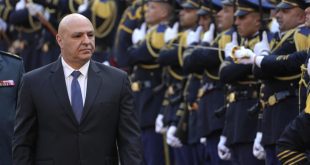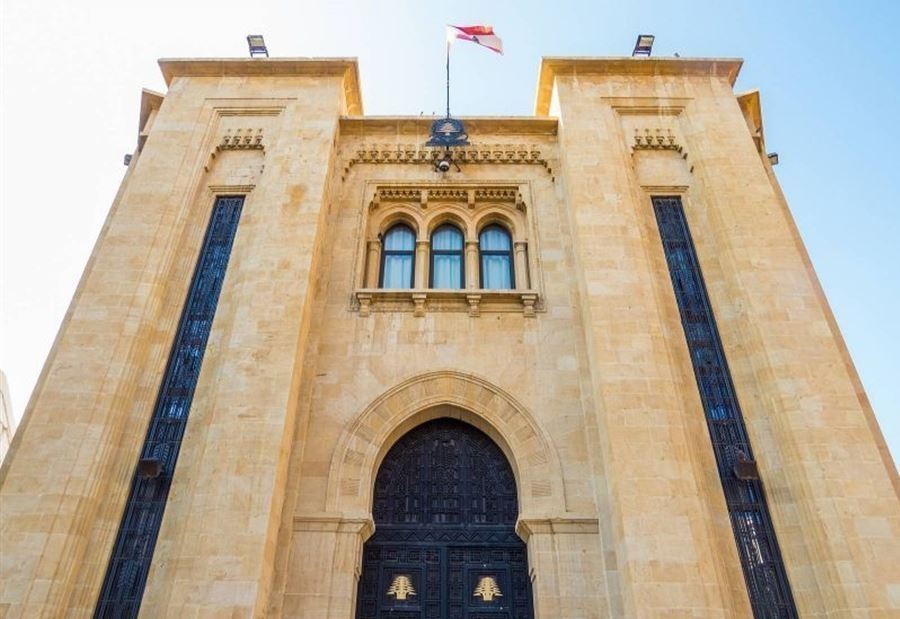جاء في صحيفة المدن:
ليست المجزرة الجديدة التي ارتكبها جيش الإحتلال الإسرائيلي في مدرسة التابعين إلا دليلاً جديداً على تمسك بنيامين نتنياهو بخيار التصعيد ومواصلة العمليات الحربية وقطع الطريق أمام كل محاولات الوصول إلى صفقة أو وقف إطلاق النار. تشكّلت في السابق قناعة عن إقدام الإسرائيليين على تصعيد عملياتهم العسكرية وتكثيف المجازر مع اقتراب الوصول إلى أي وقف لإطلاق النار، لكن هذه القاعدة لم تصّح منذ بداية الحرب على غزة، فكل مجزرة تكون غايتها الإستفزاز لتوسيع نطاق المواجهات، وتحقيق أهداف استراتيجية وهي ضرب كل مقومات الحياة في قطاع غزة.
تأتي المجزرة بعد ساعات على تأكيد البيت الأبيض إصرار الولايات المتحدة على إنجاز الصفقة والرهان على اجتماع يوم 15 آب، وعملياً فإن استهداف المدرسة هو استهداف لتلك المفاوضات من قبل نتنياهو. وهو تحدّ لكل القوى العربية والإقليمية والدولية، ورفض واضح لأي تفاوض. علماً أن أحد أهداف المساعي التفاوضية كان يتركز على امتصاص الردّ الإيراني وردّ حزب الله، وسط التداول بقراءتين. الأولى تأجيل الردّ إلى ما بعد جلسة التفاوض والإستمرار بتأجيله في حال كانت هناك بوادر إيجابية لوقف النار. والثانية هي أن يكون الردّ قبل موعد 15 آب، فيأتي الإجتماع للجم التصعيد وإستمرار المفاوضات. ولكن مع السلوك الذي ينتهجه نتنياهو تُضرب كل القراءات والسيناريوهات.
من الواضح أن رئيس وزراء الاحتلال مصمم على مواصلة العمليات العسكرية وتوسيعها ولو شملت جبهات أخرى، وهو يقدم على استفزاز الجميع، مستغلاً كل الدعم الذي ناله من الأميركيين ديمقراطيين وجمهوريين، ويتصرّف بأنه غير آبه بكل الضغوط الأميركية من قبل إدارة جو بايدن، بينما هناك من يقرأ في ممارساته بأنه يسعى إلى تحقيق ما يريده عسكرياً قبل موعد “انتخاب” دونالد ترامب الذي يريد إنهاء الحروب في الشرق الأوسط وفق قراءات إسرائيلية وأميركية.
ما يريد قوله نتنياهو من خلال المجازر التي يرتكبها في غزة، ومواصلة عمليات الإغتيال في إيران أو لبنان، بالإضافة إلى الإستمرار في التصعيد على الجبهة اللبنانية، هو أن إسرائيل لا تزال الدولة المتفوقة في المنطقة وصاحبة اليد العليا، وهو يسعى إلى تحفيز الأميركيين على الإنخراط أكثر في هذه الحرب على قاعدة ما كان قد أعلنه في الكونغرس بأن إسرائيل تقاتل عن الغرب ودفاعاً عن واشنطن في مواجهة إيران. يسير نتنياهو على طريق استدراج الأميركيين إلى القتال المباشر في وجه إيران، وهو الذي يؤرقه البرنامج النووي الإيراني، ولذلك يسعى إلى القول للأميركيين بأنه بعد كل الضربات التي وجهها لإيران تبدو طهران عاجزة عن الردّ وعن إستعادة توزان الردع، وبذلك يهدف إلى تحفيز واشنطن والغرب على الإنخراط في عملية ضد طهران وحلفائها لضبطهم وتطويقهم وإضعافهم في المنطقة.
ما يريده نتنياهو هو رسم صورة جديدة للمنطقة بناء على العوامل العسكرية واتساع رقعة الحرب. وما يهدف إليه بشكل مباشر هو القضاء على القضية الفلسطينية وإلغاء أي مفاعيل لـ”حلّ الدولتين” وهو بذلك يضرب كل السرديات العربية والدولية. في هذا المجال ثمة محطات لا يمكن إغفالها، بدءاً من اغتيال إسحاق رابين، وذلك للإنقلاب على أوسلو والإنقضاض على المزيد من الأراضي الفلسطينية، وبعدها اغتيال ياسر عرفات أيضاً للمضي قدماً في الإنقلاب على أوسلو ومقومات الدولة الفلسطينية، وصولاً إلى اغتيال اسماعيل هنية في قلب طهران، فضرب أي مسار تفاوضي أو سياسي على وقع الحرب في غزة، واستفزاز إيران ومحورها للدخول في حرب أو مواجهة تنطلق مع تنفيذ الردّ، أما في حال عدم تنفيذ ردّ متوازن فيكون نتنياهو قد قال للجميع إن يده تطال حيث تشاء ولا أحد قادر على إقامة توازن عسكري أو أمني معه، ما يعني أنه سيمضي بمشروعه نحو تهجير غزة، وتهويدها ربما والتفرغ بعدها لتهجير المزيد من الفلسطينيين من الضفة الغربية والإنطلاق نحو التهويد الفعلي للقدس.
إنها حرب يريد نتنياهو أن يصورها بين الشرق الغرب، في ظروف دقيقة جداً، تزامنت مع زيارة روسية إلى إيران ووعد بتقديم دفاعات جوية، في مقابل تسريبات عن أن إيران ستزود روسيا بصواريخ بالستية دقيقة. يتزامن ذلك مع تقدّم أوكراني ضد روسيا ودخول إلى الأراضي الروسية والسيطرة على مساحات منها، يقدّم ذلك صورة فيها إحراج أكبر لروسيا عبر أوكرنيا، ولإيران من خلال العمليات التي نفذها الإسرائيليون. هذه التطورات لها انعكاسها على الساحة السورية أيضاً، وسط إصرار روسي على تحييد سوريا عن مجالات الصراع، الأمر الذي لا يروق لإيران، في مقابل اشتباكات تخوضها فصائل عربية متحالفة مع النظام ضد الأكراد، وهي معارك غايتها السيطرة على حقول النفط، وبعدما سيطر القبائل العربية على حقل العمر، لأيام، نجحت أميركا في استعادة السيطرة عليه. مثل هذه المعارك التكتيكية حيناً والإستراتيجية أحياناً على الساحة السورية، يقابلها مزيد من المحاولات لتسجيل إختراقات في صفوف وبنية النظام السوري إما من خلال تفاوض مع الأميركيين، او من خلال تقارب مع بعض الدول العربية، وهو ما يُراد تصويره بأنه محاولة أيضاً لتطويق إيران ونفوذها في سوريا.
على كل هذه الإيقاعات والتناقضات والتداخلات، تسير وقائع الحرب على غزة وتستمر، وسط إصرار من نتنياهو على توسيعها وهذا لم يعد فيه أي لبس، ولا بد من انتظار مسارات الأمور وإذا كان سينجح في ذلك. والأكيد أنه يستفيد من كل التحشيد العسكري الأميركي الضخم، خصوصاً أن الحضور الأميركي في المنطقة عسكرياً، وتكنولوجياً، هو الذي يتيح لإسرائيل تحقيق دقة بالأهداف والقدرة المتقدمة على الرصد بناء على نظام متطور جداً لا أحد يمتلكه إلا الأميركيون، وبالتالي وجود القوات الأميركية يقدّم الكثير من الإفادة للإسرائيليين هجومياً حتى وإن كانت أميركا تضعه في خانة الدفاع والردع، وبما أن اميركا أعلنت مسبقاً كامل الإلتزام بأمن إسرائيل فهذا ما سيستغله نتنياهو لمواصلة الحرب وتوسيعها وإن اقتضى ذلك إشعال حرب إقليمية.
المصدر: المدن
**Netanyahu’s Ambition to Redefine the Region: A Calculated Escalation**
The recent massacre carried out by the Israeli military in a school is yet another testament to Prime Minister Benjamin Netanyahu’s commitment to escalation, intensifying military operations, and thwarting any attempts at reaching a ceasefire or a broader agreement. Historically, Israel has often escalated military actions as ceasefire negotiations neared, but this pattern has shifted in the ongoing Gaza conflict. Each massacre now seems aimed at provoking broader confrontations and achieving strategic objectives, such as dismantling the essential infrastructure in Gaza.
This latest atrocity comes shortly after the White House reaffirmed its determination to secure a deal and its optimism about the upcoming August 15th meeting. By targeting the school, Netanyahu is not only challenging these negotiations but also issuing a clear rejection of any diplomatic efforts, sending a defiant message to all regional and international powers. One of the key objectives of the negotiations has been to mitigate potential Iranian and Hezbollah responses, with two prevailing theories: one suggesting a delayed response until after the negotiations, contingent on positive signs towards a ceasefire; and the other anticipating a pre-August 15th response to prompt continued negotiations. However, Netanyahu’s actions seem to dismiss all these scenarios.
It is evident that Netanyahu is intent on continuing and expanding military operations, potentially across multiple fronts, exploiting the unwavering support he has received from both American Democrats and Republicans. He appears indifferent to the pressures from the Biden administration, with some interpreting his actions as an effort to achieve his military goals before a possible Trump presidency. Trump, according to Israeli and American perspectives, aims to end wars in the Middle East.
Through these massacres in Gaza and ongoing assassinations in Iran and Lebanon, Netanyahu is attempting to reaffirm Israel’s military superiority in the region. He seeks to encourage deeper American involvement in the conflict, reiterating his claim made in Congress that Israel is fighting on behalf of the West and defending Washington against Iran. Netanyahu’s strategy seems to be luring the U.S. into direct conflict with Iran, particularly concerning Iran’s nuclear program. By demonstrating that Iran has been unable to effectively respond to the blows dealt by Israel, he aims to push Washington and its allies towards taking action against Tehran and its regional allies to weaken and contain them.
Netanyahu’s broader objective is to reshape the region based on military power and the expansion of war. His direct goal is to eliminate the Palestinian issue and nullify any momentum towards a “two-state solution,” thereby dismantling all Arab and international narratives supporting it. This strategy is reminiscent of significant historical events: the assassination of Yitzhak Rabin to overturn the Oslo Accords and seize more Palestinian land, and the assassination of Yasser Arafat to continue dismantling the foundations of a Palestinian state. The recent assassination of Ismail Haniyeh in Tehran is another move to disrupt any political or diplomatic paths, provoking Iran and its allies into a confrontation.
If Iran fails to deliver a balanced response, Netanyahu would have demonstrated Israel’s far-reaching military capabilities, uncontested by any regional power. This could pave the way for further actions, such as the displacement and possible Judaization of Gaza, followed by the displacement of more Palestinians from the West Bank, leading to the eventual Judaization of Jerusalem.
Netanyahu’s war strategy is framed as a clash between East and West, amid delicate geopolitical circumstances. This escalation coincides with a Russian visit to Iran, promising advanced air defenses, while rumors circulate that Iran may provide Russia with precision ballistic missiles. These developments come alongside Ukrainian advances against Russia, including incursions into Russian territory, which put additional pressure on Moscow and Tehran.
These dynamics also affect the Syrian theater, where Russia is adamant about keeping Syria out of the conflict, much to Iran’s displeasure. Meanwhile, Arab factions allied with the Syrian regime are clashing with Kurdish forces, primarily over control of oil fields. After Arab tribes briefly seized the Al-Omar oil field, the U.S. swiftly regained control. Such tactical and strategic battles in Syria are complemented by attempts to fracture the Syrian regime’s structure through negotiations with the Americans or rapprochement with certain Arab states, all seen as efforts to isolate and contain Iran’s influence in Syria.
Against this backdrop of complex contradictions and intertwined interests, the war on Gaza continues, with Netanyahu’s intent to expand it now beyond doubt. The outcome remains uncertain, but it is clear that he is leveraging the substantial U.S. military presence and technology in the region. The advanced American surveillance systems and military precision are integral to Israel’s operations, despite the U.S. framing its role as defensive. Given America’s prior commitment to Israel’s security, Netanyahu is likely to exploit this to sustain and expand the conflict, even at the risk of igniting a broader regional war.
Translated By International Scopes Team
 International Scopes – سكوبات عالمية إجعل موقعنا خيارك ومصدرك الأنسب للأخبار المحلية والعربية والعالمية على أنواعها بالإضافة الى نشر مجموعة لا بأس بها من الوظائف الشاغرة في لبنان والشرق الأوسط والعالم
International Scopes – سكوبات عالمية إجعل موقعنا خيارك ومصدرك الأنسب للأخبار المحلية والعربية والعالمية على أنواعها بالإضافة الى نشر مجموعة لا بأس بها من الوظائف الشاغرة في لبنان والشرق الأوسط والعالم




